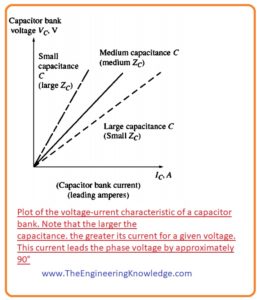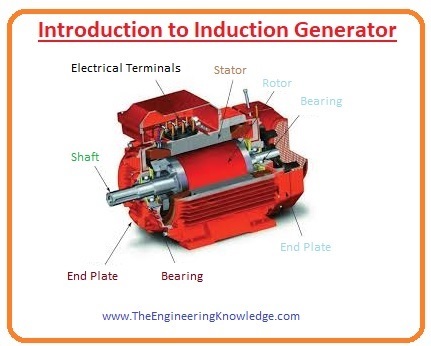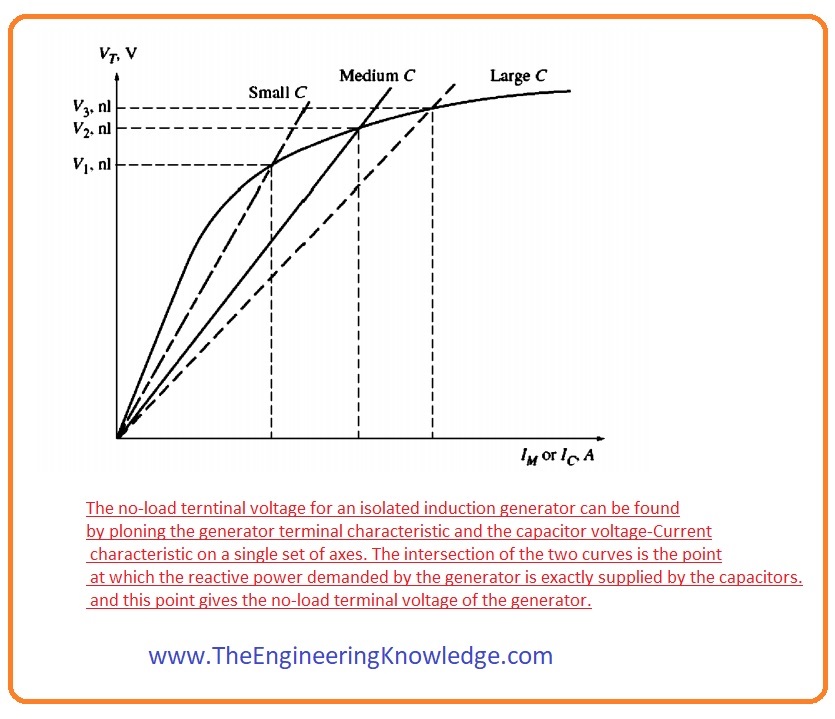 Hello friends, I hope all of you are doing great. In today’s tutorial, we are gonna have a look at the introduction to the Induction Generator. A generator is such an instrument that converts any kind of energy into electricity. As you know energy can’t be produced it can convert from one form to another. The generator can convert many types of energy like mechanical, thermal, and P.E into electrical. Mechanical energy is very common which is work on the generator to produce electricity. When the generator transforms a mechanical into electrical energy is also known as the dynamo.
Hello friends, I hope all of you are doing great. In today’s tutorial, we are gonna have a look at the introduction to the Induction Generator. A generator is such an instrument that converts any kind of energy into electricity. As you know energy can’t be produced it can convert from one form to another. The generator can convert many types of energy like mechanical, thermal, and P.E into electrical. Mechanical energy is very common which is work on the generator to produce electricity. When the generator transforms a mechanical into electrical energy is also known as the dynamo.
Nowadays generators work in our homes, factories or industrial zones. Like they are working in different automobiles, in wind turbines, or in an electrical generation system. In today’s post, we will look at the induction generator introduction, working construction, uses, or circuits. So, let’s get started with the Introduction to Induction Generator.
Introduction to Induction Generator
- An AC generator that has working phenomena similar to the induction motors is called an induction generator.
- This generator works in a mechanical way as the speed of rotation of the generator is higher than the synchronous speed.
- A normal induction motor mostly works as a generator, without any special changing in its circuitry.
- An induction generator is mostly used in hydel power plants, and wind energy generation, and they have the capability to decrease the higher-pressure air to less pressure because they have the ability to restore power in the easiest way.
- The induction generator has many restrictions. Because it does not have external excitation circuitry and it cannot generate reactive energy (Q).
- As this generator uses reactive energy so there should be an exterior reactive power source that should be connected with it to provide field at the stator.
- This separate source also regulates (control) the output voltage of the generator, this generator does not have the ability to control its terminal voltages.
- Usually, the voltage of the generator is controlled by the exterior energy source which is linked with it.
- The chief benefit of this generator is that its construction is very simple and there is no need to move constantly on the same speed it also does not have special field circuitry.
Excitation of Induction Generator
- In an induction machine either it is a motor or a generator it needs an armature current which is provided by the exterior supply.
- Since the field in the rotor lag, the field of the stator, and induction generator or motor always uses reactive power.
- So, the supply source for the production of reactive power is needed at the starting part of the generator to produce (induce) current in the rotor.
- When the generator is not working then reactive power is provided by the external source after this it uses its own power.
- The energy production method for induction motors is complex by the requirement to energize the rotor, which starts with only the remaining (residual) magnetization.
- In some situations, that remaining (residual) magnetization is sufficient to self-excitation the motor under loading conditions.
- So, it is essential to either stop the machine and attach it temporarily to supply at a power station or to connect the capacitor bank which already has energy stored and delivers the compulsory reactive power during the process.
Working principle of Induction generator
- The induction generator generates electrical power when the speed of rotation of the rotor is greater than the synchronous speed (it is the speed of rotation of field in the stator).
- If we have a normal 4-pole induction motor that working at the sixty-hertz frequency it will have a synchronous speed 1800 RPM (revolution per minute).
- We can find synchronous speed by this given formula.
nsyn =120fe/P
- In this equation,
nsyn is the synchronous speed.
fe is the electrical frequency.
P is the no of the pole of the motor.
- If we have another similar no of pole machines working at fifty-hertz frequencies, then it will have 1500 revolutions per minute speed.
- The speed of rotation of the motor is less than the synchronous speed (nsync).
- The difference between the rotor moving speed and the synchronous speed is known as the slip.
- Let’s suppose that the motor is rotating at 1450 revolutions per minute and has Nsync (synchronous speed) 1500 revolutions per minute then its slip is (+3.3) percent.
- During the usual working of the induction motor, the synchronous speed is larger than the speed of the rotor.
- It allows rotor flux to produce current in the rotor, this current produces flux in the stator which has polarity reverse to the stator flux.
- In this way, the rotor pulled along behind stator flux, with the currents in the rotor induced at the slip frequency.
- In the case of a generator, a prime mover (that provides mechanical energy to the generator) moves the rotor at such speed that is higher than the synchronous speed.
- In the case of the generator stator also induced a current in the rotor and produced flux as the opposite rotor flux is now linked with the stator, a current is formed in the stator and the motor now works as a generator as it produces electrical energy.
Induction Generator Operating Alone
- The induction generator has the ability to work alone if we provide it with a capacitor bank for the reactive power.
- In the given diagram, an isolated generator is shown.
- The magnetizing current IM essential for an induction machine as a function of terminal voltage (Vt) can be calculated by running the machine as a motor at no load and calculating its armature current (Im) as a function of the terminal voltage. The given diagram explains the curve for this process.

- To attain the specific voltage for the induction generator, the capacitor banks connected with it should give such value of magnetization current which correspondent to that level.
- Meanwhile, the current which is provided by the capacitor banks is directly proportionate to the voltage supplied to it, the emplacement of all likely groups of voltage and current through a capacitor is linear.
- The related curve is shown in the given diagram.

- If a 3-phase set of capacitors is associated with the terminals, the no-load voltage of the induction generator will intersect the magnetization curve of the generator and the load line of the capacitor banks.
- The no-load output voltage of the generator for three 3 capacitor banks is drawn is a given diagram.
The torque-speed characteristics of induction Generator
- The torque-speed characteristic curve of the induction machine is drawn is the given diagram.
- In a resultant circuit of an induction motor, we have seen that the output of the motor was replaced with the resistance of the given below value.
Rmec=R2/s (1-s)
- From the curve, we can see that the slip of the induction generator has a negative value due to this the value of resistance of the load is also negative.
- It means that the load resistor does not consume power but it works as a power source.
- It has started the power to supply which is linked to it.
- The output of the induction generator depends on some given factors.
- The value of negative slip (S).
- rotation speed of the rotor.
- We can see from the torque-speed characteristic curve of the induction motor that the extreme torque produced in the generator mode is named pushover torque.
- If the value of this torque provided by any prime mover is higher than the pushover torque.
How does the voltage build up in an induction generator when it is first started?
- When the first time we start the induction generator the remaining (residual) magnetism in the stator of the generator creates a lower value of voltage.
- The smaller voltage generates a current in the rotor this rotor current-induced voltage in the stator and the value of stator voltage increases then gets the normal value to run the generator.
- The main question is that if there is no residual magnetization in the stator then how the generator will start?
- The main issue with the induction generator is that the voltage of this generator changes with the load variation, especially when it is working with a reactive load.
- Characteristics curve of an induction generator functioning alone with a constant parallel capacitance drawn in the given diagram.

- You can see from the graph that if there is an inductive load at the generator then the curve goes down very fastly.
- It occurs as the capacitor banks provide the power (reactive) to the generator and the load and if some part of power moves toward the load, is diverted to the generator causing serious voltage drops in the generator.
- Due to these voltage drops in the generator is not easy to start an induction motor by the output supply of the generator.
- The different methods should be used to upsurge the effective capacitance during initial conditions and then reduce it during normal working.
Limitations of Induction Generator
- An induction generator associated with a capacitor scheme can produce enough reactive power to work on its own.
- When the load current surpasses the ability of the generator to deliver both magnetization reactive power and load power the generator will instantly stop to generate power.
- The output at the shaft should be eliminated and the generator should start again with a DC supply of from the residual magnetism in the stator it is existing.
- Induction generators are mainly appropriate for wind energy-producing places as in this case speed is constantly a flexible factor.
- Contrasting to synchronous motors, induction generators are load-reliant and cannot be used separately for frequency control of grid stations.
Induction Generator Applications
- Induction generator was mostly used in 20 centuries, but from 1960 to 1970 they almost vanished from the market for public use.
- But after 1973 when the oil price increased people realized the importance of these generators then they came back in the market.
- By increasing the prices of energy, these generators become very useful for industries.
- As of their ease and smaller size per KW of output power, induction generators are also preferred for smaller windmills.
It is the complete article about the induction generator if you want to know something else about the induction generator can ask in the comments. See you in the next tutorial.
You can also read some related articles to the induction motor. That is described here.
- Introduction to Induction Motor
- Introduction to Three Phase Induction Motor
- Equivalent Circuit Induction Motor
- Induction Motor Torque-Speed Characteristics
- Variations in Induction Motor Torque-Speed Characteristics
- Power and Torque in Induction Motors
- Induction Motor Design Classes
- speed Control Method of Induction Motors
- Induction Motor Design
- No-load Test of Induction Motor
- Solid State Drive Induction Motor
- Derivation of the Induction Motor Induced-Torque Equation
- Induction Motor Induced-Torque Equation










What an explain man wonderfull you can do it I’m still waiting for the next tutorial…
Having read this I thought it was rather enlightening.
I appreciate you taking the time and energy to put this information together.
I once again find myself personally spending a significant
amount of time both reading and commenting. But so what,
it was still worth it!
You made some decent points there. I seemed on the web for the difficulty and located most people will go together with along with your website.
I do consider all of the ideas you’ve presented to
your post. They’re really convincing and can certainly work.
Still, the posts are too brief for starters. May just you please
lengthen them a bit from subsequent time? Thanks for the post.
adreamoftrains hosting services
Heya i’m for the primary time here. I came across this board
and I in finding It truly useful & it helped me out a lot.
I’m hoping to present one thing again and aid others like you helped me.
At this time it sounds like Movable Type is the top
blogging platform out there right now. (from what I’ve read)
Is that what you are using on your blog?
Just want to say your article is as astonishing. The clearness in your post is simply spectacular and i could assume you’re an expert on this subject. Fine with your permission allow me to grab your feed to keep updated with forthcoming post. Thanks a million and please keep up the gratifying work.